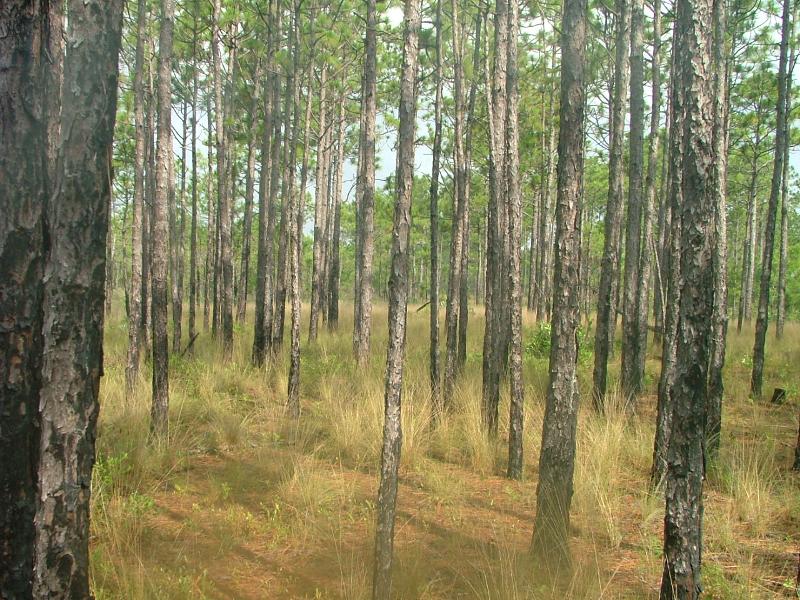Forest Wildlife Management and Conservation
| Author: | LeRoy Humphries |
| Level: | High School |
| Content Area: | Biology, Environmental Science |
| Author: | LeRoy Humphries |
| Level: | High School |
| Content Area: | Biology, Environmental Science |
Forest managers have a wide variety of tools at their disposal. These include prescribed burning and various types of cuttings. Below is a brief description of each.
Prescribed burning of a forest is the carefully controlled use of fire to remove undergrowth and debris and promote healthy growth of the forest as a whole. The following video clip demonstrates the use of prescribed burning and some of the dangers associated with it.
View the prescribed burning on the Nokuse Plantation in the Florida Panhandle here.
Fire returns nutrients to the soil and reduces competition for resources for economically important tree species. Additionally, many species living in a forest are dependent on fire for their propagation. For example, after the 1988 wildfires in Yellowstone National Park species that had not been seen in the park for decades began to reappear and the reproduction of aspen trees increased greatly . Animal species may also benefit from prescribed burning. Follow the link to the Yellowstone Park website (1988 Yellowstone Park Fires) to see some examples of how the 1988 fires there helped the ecosystem.
In the Southern United States, the southern pine forest ecosystem is fire-dependent. Longleaf pine, a commercially important species, is very fire adapted. A slow growing species, it has thick bark, a thick root that is protected from fire, and a dense protective layer of needles around the buds. The image below is a section of the Croatan National Forest in Carteret County, NC that is carefully managed by the National Forest Service. Part of their management strategy is the use of prescribed burning on a regular basis (note the blackened areas on the tree trunks). What else can you tell about the forest in this photo? There is very little understory growth, as expected where burning is conducted. Also, the trees are all about the same size/age meaning that this forest has been timbered and replanted at some point.

Thinning is a type of intermediate cutting where the volume of trees in a forest is lessened to reduce competition for sunlight and nutrients thereby allowing the remaining trees to grow straight and tall and actually increasing the total volume of timber produced. In other words, if you reduce the amount of trees in a stand of timber, you decrease competition for resources and increase the growth of the remaining trees.

Liberations are a type of intermediate cutting where the taller, more dominant trees are negatively impacting the growth of the timber stand as a whole. Removal of taller trees enables species that are shade intolerant (i.e. do not grow well in shady conditions) to grow better.

Sanitation cuttings are the removal of diseased or damaged trees. Diseases can be caused by fungal infections or insect infestations. Healthy trees can then grow with less competition and less risk of loss due to diseases.

Removal of undesired trees is used to reduce competition for resources for the desired tree species. By removing "weed" trees, or trees that may be growing in an undesired location (i.e. hardwoods growing in a pine stand) the target species of tree gains additional access to sunlight, nutrients, and water and the volume of lumber produced will be greater.

Salvage Cuttings are used to salvage wood from trees that have been damaged or killed. Factors that can kill large numbers of trees can include ice storms, hurricanes, even volcanic eruptions.

So, got all that? Lets put you to the test... Answer the following questions and see how you do! (No peeking!)
1 Careful burning of the undergrowth in a forest to clear out debris, potential wildfire dangers, and to encourage the growth of desired species.
2 Depending on the climate, tree species, and the objectives of the manager and/or landowner cuttings can be made to enhance growth and production of in a forest.Cuttings used to help young trees grow are called "cleanings" while those used to to improve the condition of an older stand of trees are called "improvement cuttings."